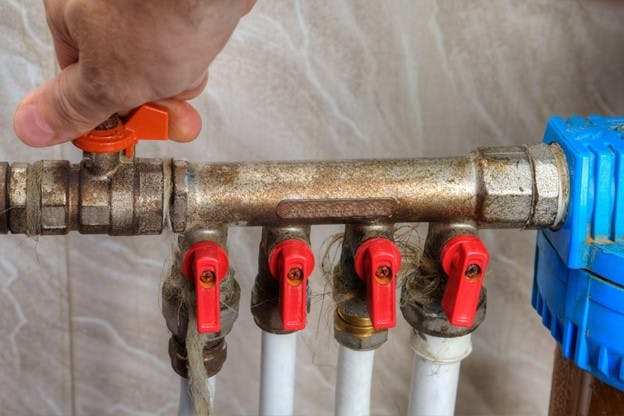The Conclusive Handbook to Dealing with Low Water Pressure in Your Home
The Conclusive Handbook to Dealing with Low Water Pressure in Your Home
Blog Article
Just how do you really feel when it comes to Dealing with Low Water Pressure in Your Home?

Low tide stress in your house can be an irritating issue, influencing whatever from showering to cleaning meals. If you're experiencing weak water circulation, there are several feasible reasons and options to discover. In this overview, we'll discuss usual factors for low tide stress and sensible actions to deal with the problem efficiently.
Intro to Low Water Pressure
Low water pressure happens when the flow of water from your taps, showers, and various other fixtures is weak than normal. This can make daily tasks more challenging and less effective. Comprehending the causes of low tide stress is important to finding the best option.
Usual Reasons For Low Tide Stress
Faulty Pressure Regulators
Stress regulatory authorities are accountable for maintaining constant water stress in your house. If they malfunction, it can cause low tide stress or uneven circulation throughout the house.
Municipal Water Supply Issues
Often, the problem exists outside your home. Municipal supply of water problems, such as main line leaks or upkeep job, can momentarily lower water pressure in your area.
Pipe Obstructions
Over time, pipes can become obstructed with natural resource, sediment, or particles, restricting the flow of water. This is an usual issue in older homes with galvanized steel pipes.
Rust
Deterioration within pipelines can lead to leakages and minimized water pressure. Corrosion buildup can restrict water circulation, especially in aging plumbing systems.
Just How to Identify Low Tide Pressure
Inspecting Pipes
Check visible pipes for indications of leakages, deterioration, or blockages. Pay attention to any kind of unusual audios, such as banging or rattling pipes, which might suggest problems within the plumbing system.
Consulting with a Plumber
If you're unable to pinpoint the reason for low water pressure, think about employing a professional plumber to perform a complete examination. They can determine underlying issues and recommend ideal solutions.
Inspecting Taps and Components
Beginning by checking the water pressure at different faucets and fixtures throughout your home. If the problem is isolated to certain locations, it might suggest local troubles.
DIY Solutions to Deal With Low Tide Stress
Flushing Water Heater
Debris build-up in the water heater can limit circulation and decrease efficiency. Purging the tank occasionally assists remove debris and maintain optimal efficiency.
Examining Stress Regulator
Ensure that the stress regulator is operating correctly. Changing or changing the regulatory authority can assist bring back appropriate water stress throughout your home.
Cleansing Aerators and Showerheads
Natural resources can build up in aerators and showerheads, lowering water circulation. Remove and clean up these elements routinely to improve water stress.
Clearing Up Clogs in Pipeline
For small obstructions, attempt using a plumbing serpent or chemical drain cleaner to clear obstructions in pipes. Beware when making use of chemicals and follow safety guidelines.
When to Call an Expert Plumber
If do it yourself efforts fail to solve the issue or if you suspect significant plumbing issues, it's best to seek aid from a qualified plumber. They have the knowledge and tools to deal with complicated problems securely and successfully.
Preventive Measures to Preserve Water Stress
Mounting a Stress Booster
Take into consideration setting up a stress booster pump to improve water stress in areas with consistently low flow. This can be especially advantageous for multi-story homes or properties with high-demand components.
Monitoring Water Usage
Bear in mind water use practices and stay clear of overtaxing the plumbing system. Straightforward adjustments, such as staggering showers and washing loads, can aid maintain ample water pressure.
Normal Upkeep
Schedule regular maintenance for your plumbing system to prevent problems such as deterioration, leaks, and clogs. Dealing with small troubles early can help avoid even more significant repair services later on.
Final thought
Managing low water pressure can be frustrating, but identifying the underlying reasons and implementing appropriate solutions can bring back ideal circulation throughout your home. Whether it's cleaning up aerators, evaluating pipelines, or seeking advice from a plumber, taking aggressive steps can guarantee a steady supply of water for your everyday needs.
FOUR WAYS TO FIX LOW WATER PRESSURE NOW
Turning on a shower or faucet only to find the water comes out in a sad, slow drizzle is never a good feeling. How exactly are you supposed to wash a pan or take a quick shower when it takes 10 minutes just to rinse off a little soap? The good news is that when your water pressure is bad, there's always a cause: typically one that can be easily fixed. Here are some of the most common causes of low pressure and what you can do to fix the issue:
DEBRIS AND MINERAL DEPOSIT BUILDUPS
If you notice low water pressure from just one or two of the fixtures in your house, the problem likely has to do with debris buildup. Water is full of minerals and other debris, all of which can accumulate in your pipes and on your fixtures. This can cause a blockage that affects how much water flows through. To fix this, try filling a small plastic bag with white vinegar, and use a rubber band to hang it around your showerhead or faucet. Let the head of the fixture soak for a few hours, and the vinegar should loosen the deposits.
WATER LEAKS
Leaks are another common cause of low water pressure. If water is flowing out of your plumbing through a hole or crack before it can reach your fixture, the pressure coming out of the faucet or showerhead will be lower. A plumbing professional is your best bet for finding and repairing a leak in your water supply pipes.
Leaks are another common cause of low water pressure. If water is flowing out of your plumbing through a hole or crack before it can reach your fixture, the pressure coming out of the faucet or showerhead will be lower. A plumbing professional is your best bet for finding and repairing a leak in your water supply pipes.
A VALVE ISSUE
If you have low water pressure throughout your home, check your main shut-off valve to make sure it's completely open. You may also want to see if there's a pressure-reducing valve installed. If there is, have a plumber help you adjust the settings to get the pressure you're looking for.
OTHERS USING WATER
Believe it or not, your low water pressure could be caused by your neighbors. If you notice low pressure at certain times of day, it may be because you and the people living next to you have similar schedules - when everyone is showering at the same time, the pressure will be lower in every home. Low pressure throughout the neighborhood may also be caused by an issue with your municipal water supply. If that's the case, call the supplier to see if they're working on the issue.
https://www.rotorooter.com/blog/water-leaking/low-water-pressure-fixes/

I am very focused on and I really hope you enjoyed reading my page. Sharing is nice. Helping others is fun. We truly appreciate reading our article about .
Call Report this page